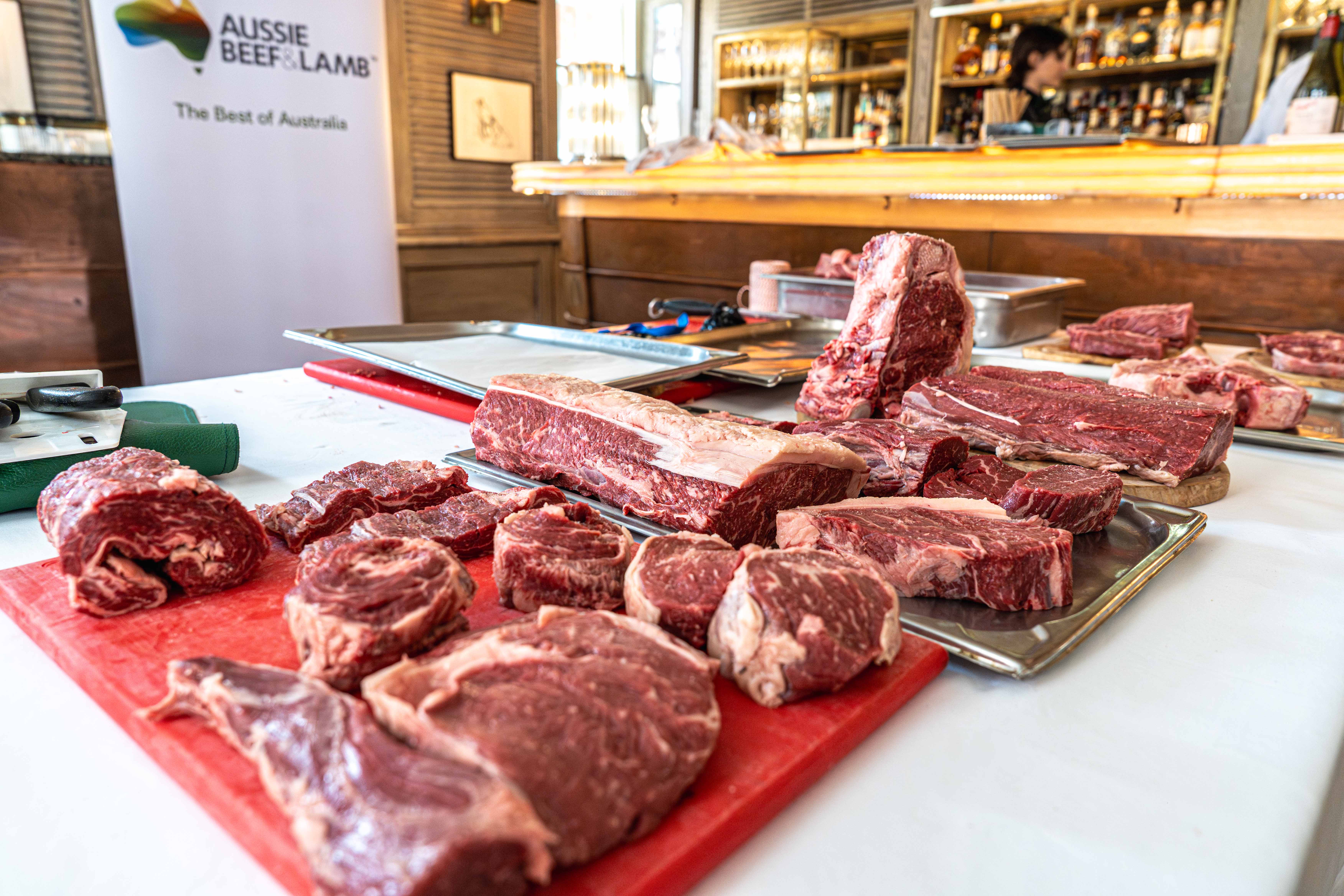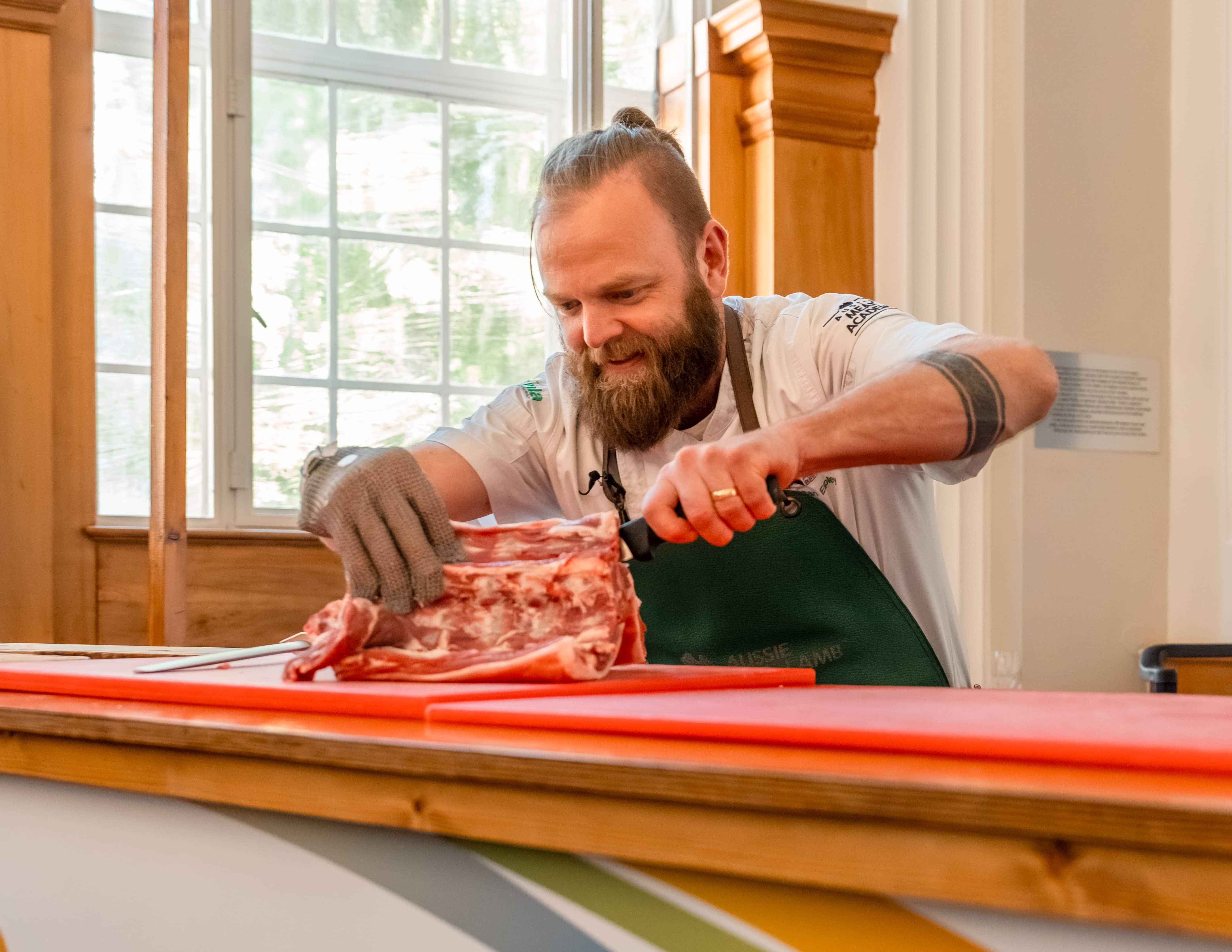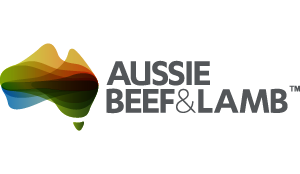UK chefs are enthusiastically praising Australian beef and lamb for its exceptional taste, rich marbling, and world-class quality. Thanks to the UK–Australia Free Trade Agreement, these premium products have become increasingly available across the UK. Chefs value the buttery texture and juicy flavour of Australian beef, especially Wagyu. Popular cuts such as featherblade, picanha, rump, and lamb shoulder offer excellent flavour and cost-effectiveness. Australia’s red meat industry is globally recognised for its leadership in sustainability, animal welfare, and responsible farming practices under strict legislation and duty of care.
Renowned chefs trust the consistent quality, traceability, and versatility of Australian beef and lamb, supported by the Livestock Production Assurance (LPA) and National Livestock Identification System (NLIS). Now, with Aussie Beef and Lamb accessible through UK retailers, consumers can enjoy restaurant-quality meat at home. Australian beef and lamb are setting new benchmarks in the UK market, reflecting the country’s focus on quality food production, animal welfare, and caring for the environment.
The Quality Advantage
Grain-fed Australian beef delivers a buttery texture, rich marbling, and exceptional tenderness. This production process, less common in the UK and Republic of Ireland, provides a unique alternative that complements local grass-fed beef, giving chefs a wider range of options for diverse menu styles and cooking techniques.
At the pinnacle of quality is Australian Wagyu beef, internationally celebrated for its excellence and backed by detailed statistics on marbling, juiciness, and eating quality. Jack’s Creek Wagyu has been awarded the World’s Best Steak in both 2023 and 2024. With a variety of Wagyu grades available, chefs can select the perfect balance of marbling, flavour intensity, and price to suit their menus. At a Chefs’ Forum event, Aussie Beef Mate, Ioannis Grammenos, stated: “I absolutely love the flavour of Aussie beef. The consistency and quality are spot on, making it the perfect choice for my award-winning dishes at Heliot Steak House. It’s a product I can always count on.”
Beyond premium Wagyu, chefs are exploring more affordable cuts such as featherblade of beef, picanha, lamb rump, and lamb shoulder. These cuts provide excellent flavour at competitive prices, ideal for casual dining, banquets, or innovative menus. Butchery demonstrations by the Aussie Meat Academy help chefs and culinary students maximise value from the whole carcass and experiment with less familiar cuts. This “nose-to-tail” approach highlights sustainable use of land and resources and fosters creativity in the kitchen.

Sustainability, Welfare, and Legislation
Sustainability, animal welfare, and compliance with legislation are key priorities for UK chefs, retailers, and consumers. Australia’s red meat industry has achieved significant milestones:
- Between 2005 and 2021, the industry has reduced net carbon emissions by 78%.
- The NLIS ensures full traceability from paddock-to-plate providing consumers and chefs with confidence and peace of mind.
- Animal welfare standards in Australia are governed by the National Animal Welfare Guidelines and rank among the highest worldwide.
- All Australian beef and lamb exported to the UK is hormone-free, disease-free, and complies with both Australian and stringent UK regulations.
These achievements resonate with chefs and consumers seeking transparency, advice, and further information about product origins. Demonstrating strong environmental and welfare credentials builds trust at the dining table and aligns with evolving consumer values. Chef Brayden Davies, Head Chef at The Box Tree in Ilkley and an ‘Aussie Beef Mate’, who toured Australian farms, said, “What impressed me most was the traceability and sustainability inherent in Australian farming.” He added, “UK chefs can be confident that by choosing Aussie Beef and Lamb, they’re selecting a premium, ethically sourced product that delivers exceptional flavour and cost-efficiency.”
Imports of Australian beef and lamb continue to steadily rise, with more high-end butchers, luxury retailers, and renowned chefs choosing these meats. This trend is driven by the consistent year-round supply of Australian beef and lamb. For chefs, this consistency supports menu stability and meets diner expectations throughout the year. Whether in fine dining or large-scale catering, this dependability builds trust, enabling chefs and retailers to plan and prepare with confidence. It also encourages culinary creativity, knowing key ingredients will be available whenever needed.

Chef Engagement and Industry Support
First-hand experience drives adoption. Australian lamb is prized for its versatile flavour and suitability across diverse cuisines. Initiatives like the Lambassador program, and Lamb Masterclasses give UK chefs direct contact with Australian lamb. These programs highlight the adaptability of cuts such leg of lamb, lamb shoulder and lamb saddle in various culinary styles, from modern British to Middle Eastern and Asian.
Renowned chefs like Lisa Goodwin-Allen, Roy Ner, and Mike Reid praise the consistent quality, eating experience, and versatility of Australian lamb. Multi-award-winning chef and Lambassador Abdul Yaseen share “The lamb cutlet fat is rich and beautifully marbled. The quality of the meat truly makes a difference. Aussie lamb delivers every time.”
Hearing these respected chefs discuss Australian beef and lamb builds confidence among others trying the products for the first time. Their endorsements reinforce that Australian red meat is reliable and inspires creativity in professional kitchens.
Addressing UK Market Concerns
Some have questioned whether Australian beef and lamb are “cheap imports.” However, facts show these products are premium quality and often award-winning. Australian beef and lamb complement rather than replace British supply.
For chefs and retailers, this means a wider selection, improved consistency, and a dependable supply chain, strengthening the overall UK red meat market and supporting local farming communities.
This trend reflects strong demand from chefs and distributors and growing consumer recognition of Australian red meat’s quality, sustainability, and welfare credentials.
For the industry, it marks a significant step in embedding Australian beef and lamb within the UK market, building on momentum created in foodservice. For consumers, increased retail availability offers an exciting chance to enjoy restaurant-quality beef and lamb at home. For chefs, it enhances product visibility and familiarity across the wider market.
Conclusion
The UK–Australia Free Trade Agreement has opened new trade opportunities, but it is the superior quality, consistent supply, and strong sustainability credentials of Australian beef and lamb that will drive enduring demand. Research and statistics show UK chefs are embracing the dependable excellence of Aussie red meat. This positions Australian red meat as a premium, reliable choice that complements local production and offers versatility for both high-end and everyday menus. Early adopters benefit from a supply chain delivering exceptional flavour, trustworthiness, and sustainability, shaping the future of dining in Great Britain.
Back to Blogs



